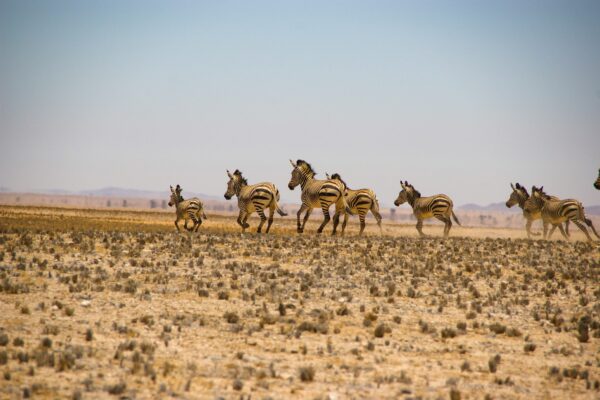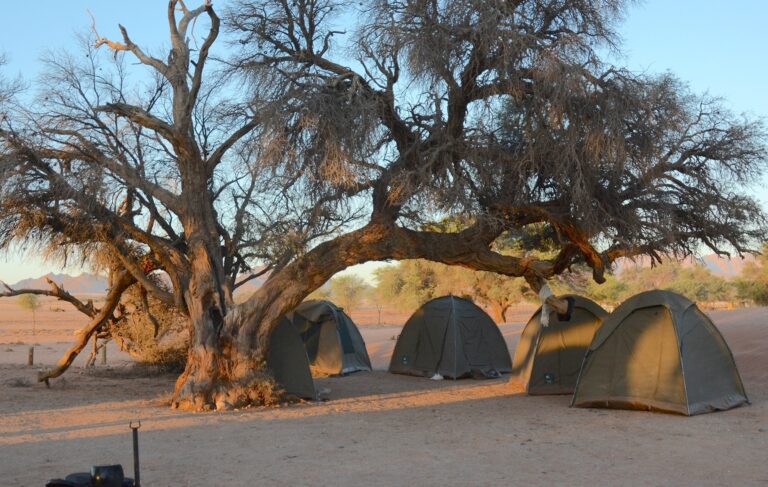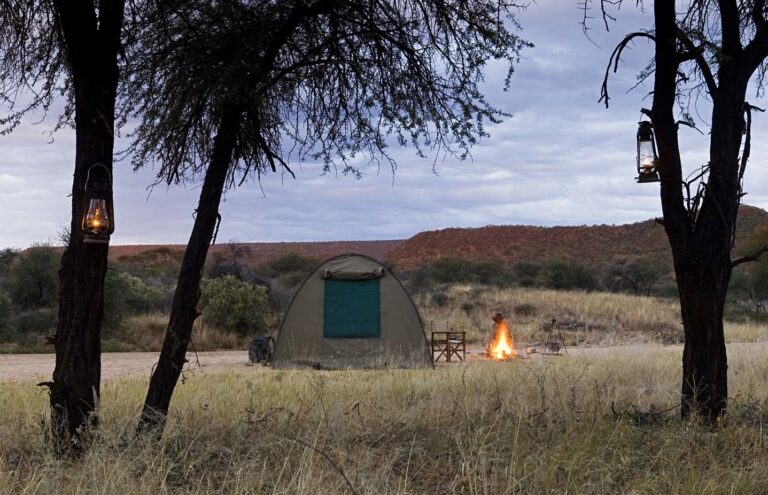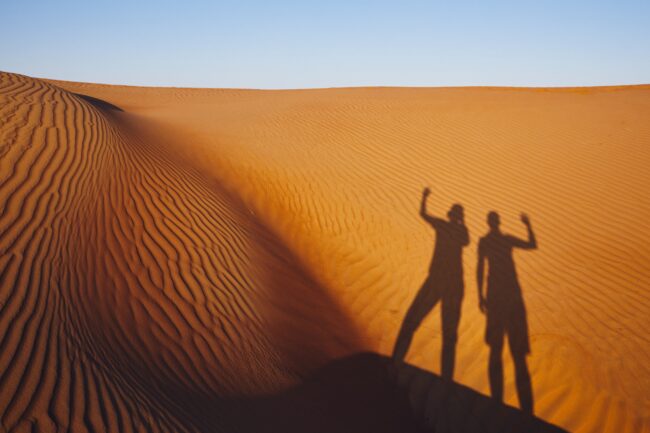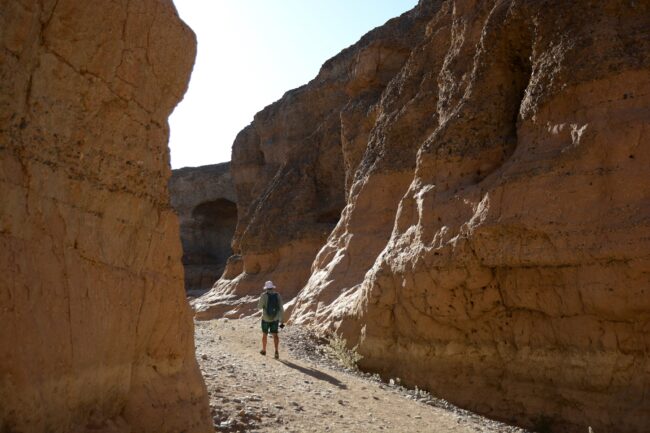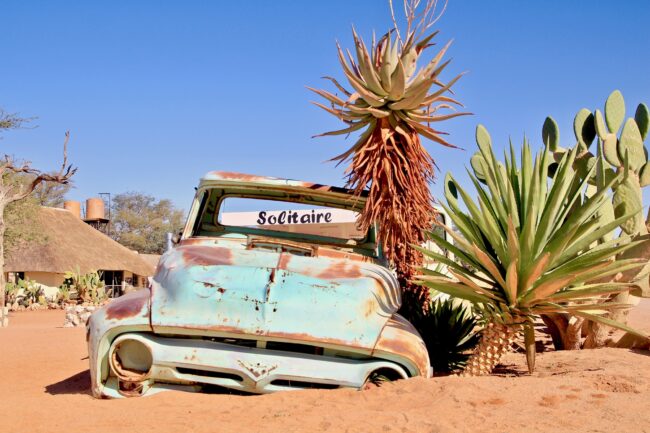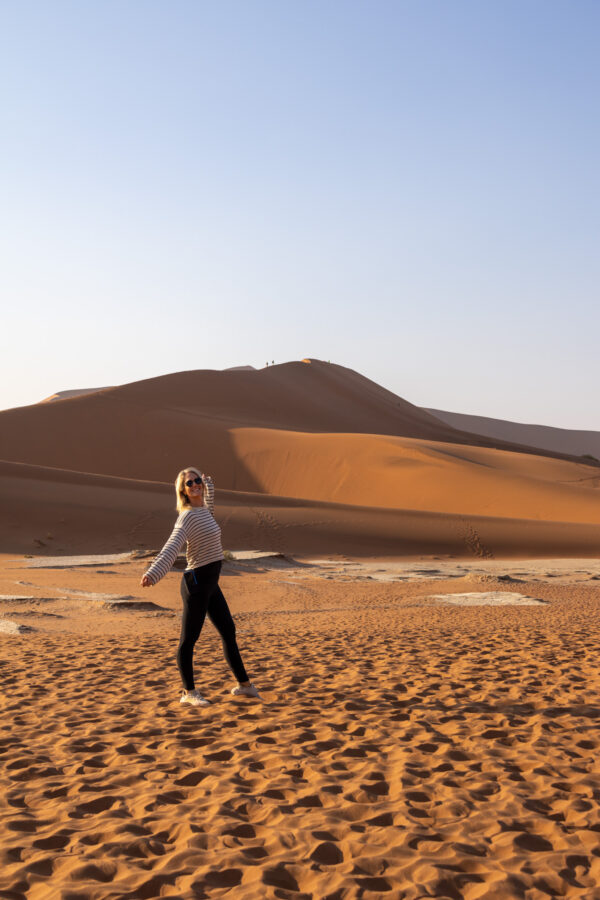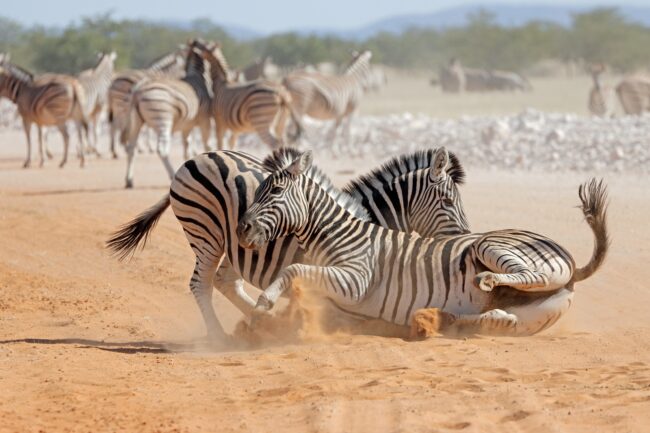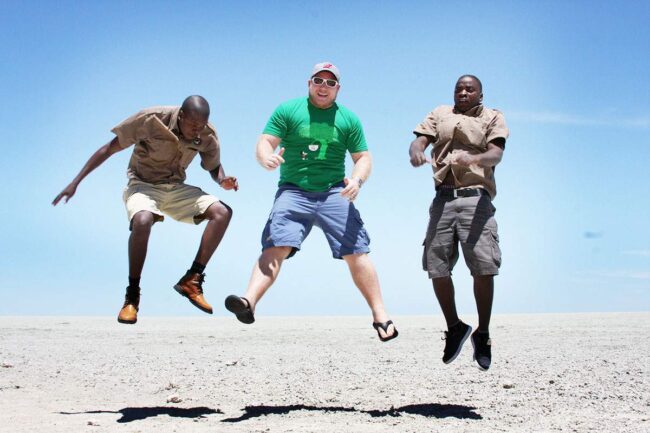|
Tuesday
11 Feb 2025
Windhoek
Windhoek
|
Wednesday
19 Feb 2025
Windhoek
|
|
ON
SALE
ZAR
0
ZAR
0
|
|
| Option |
Price Per Person |
Camping - Twin Share
|
0
38,500
ZAR 38,500
Per Person
|
Camping - Single
|
0
41,800
ZAR 41,800
Per Person
|
?Child rates apply to children aged 5 to 11 years and must share with one paying adult, otherwise adult rate will apply. No children under the age of 5 years are allowed on this safari.
PRICE PER CHILD
|
0
35,500
ZAR 35,500
Per Child
|
|
|
Tuesday
18 Feb 2025
Windhoek
Windhoek
|
Wednesday
26 Feb 2025
Windhoek
|
|
ON
SALE
ZAR
0
ZAR
0
|
|
| Option |
Price Per Person |
Camping - Twin Share
|
0
38,500
ZAR 38,500
Per Person
|
Camping - Single
|
0
41,800
ZAR 41,800
Per Person
|
?Child rates apply to children aged 5 to 11 years and must share with one paying adult, otherwise adult rate will apply. No children under the age of 5 years are allowed on this safari.
PRICE PER CHILD
|
0
35,500
ZAR 35,500
Per Child
|
|
|
Tuesday
25 Feb 2025
Windhoek
Windhoek
|
Wednesday
5 Mar 2025
Windhoek
|
|
ON
SALE
ZAR
0
ZAR
0
|
|
| Option |
Price Per Person |
Camping - Twin Share
|
0
38,500
ZAR 38,500
Per Person
|
Camping - Single
|
0
41,800
ZAR 41,800
Per Person
|
?Child rates apply to children aged 5 to 11 years and must share with one paying adult, otherwise adult rate will apply. No children under the age of 5 years are allowed on this safari.
PRICE PER CHILD
|
0
35,500
ZAR 35,500
Per Child
|
|
|
Tuesday
4 Mar 2025
Windhoek
Windhoek
|
Wednesday
12 Mar 2025
Windhoek
|
|
ON
SALE
ZAR
0
ZAR
0
|
|
| Option |
Price Per Person |
Camping - Twin Share
|
0
38,500
ZAR 38,500
Per Person
|
Camping - Single
|
0
41,800
ZAR 41,800
Per Person
|
?Child rates apply to children aged 5 to 11 years and must share with one paying adult, otherwise adult rate will apply. No children under the age of 5 years are allowed on this safari.
PRICE PER CHILD
|
0
35,500
ZAR 35,500
Per Child
|
|
|
Tuesday
11 Mar 2025
Windhoek
Windhoek
|
Wednesday
19 Mar 2025
Windhoek
|
|
ON
SALE
ZAR
0
ZAR
0
|
|
| Option |
Price Per Person |
Camping - Twin Share
|
0
38,500
ZAR 38,500
Per Person
|
Camping - Single
|
0
41,800
ZAR 41,800
Per Person
|
?Child rates apply to children aged 5 to 11 years and must share with one paying adult, otherwise adult rate will apply. No children under the age of 5 years are allowed on this safari.
PRICE PER CHILD
|
0
35,500
ZAR 35,500
Per Child
|
|
|
Tuesday
18 Mar 2025
Windhoek
Windhoek
|
Wednesday
26 Mar 2025
Windhoek
|
|
ON
SALE
ZAR
0
ZAR
0
|
|
| Option |
Price Per Person |
Camping - Twin Share
|
0
38,500
ZAR 38,500
Per Person
|
Camping - Single
|
0
41,800
ZAR 41,800
Per Person
|
?Child rates apply to children aged 5 to 11 years and must share with one paying adult, otherwise adult rate will apply. No children under the age of 5 years are allowed on this safari.
PRICE PER CHILD
|
0
35,500
ZAR 35,500
Per Child
|
|
|
Tuesday
25 Mar 2025
Windhoek
Windhoek
|
Wednesday
2 Apr 2025
Windhoek
|
|
ON
SALE
ZAR
0
ZAR
0
|
|
| Option |
Price Per Person |
Camping - Twin Share
|
0
38,500
ZAR 38,500
Per Person
|
Camping - Single
|
0
41,800
ZAR 41,800
Per Person
|
?Child rates apply to children aged 5 to 11 years and must share with one paying adult, otherwise adult rate will apply. No children under the age of 5 years are allowed on this safari.
PRICE PER CHILD
|
0
35,500
ZAR 35,500
Per Child
|
|
|
Tuesday
1 Apr 2025
Windhoek
Windhoek
|
Wednesday
9 Apr 2025
Windhoek
|
|
ON
SALE
ZAR
0
ZAR
0
|
|
| Option |
Price Per Person |
Camping - Twin Share
|
0
44,500
ZAR 44,500
Per Person
|
Camping - Single
|
0
48,000
ZAR 48,000
Per Person
|
?Child rates apply to children aged 5 to 11 years and must share with one paying adult, otherwise adult rate will apply. No children under the age of 5 years are allowed on this safari.
PRICE PER CHILD
|
0
41,500
ZAR 41,500
Per Child
|
|
|
Tuesday
8 Apr 2025
Windhoek
Windhoek
|
Wednesday
16 Apr 2025
Windhoek
|
|
ON
SALE
ZAR
0
ZAR
0
|
|
| Option |
Price Per Person |
Camping - Twin Share
|
0
44,500
ZAR 44,500
Per Person
|
Camping - Single
|
0
48,000
ZAR 48,000
Per Person
|
?Child rates apply to children aged 5 to 11 years and must share with one paying adult, otherwise adult rate will apply. No children under the age of 5 years are allowed on this safari.
PRICE PER CHILD
|
0
41,500
ZAR 41,500
Per Child
|
|
|
Tuesday
15 Apr 2025
Windhoek
Windhoek
|
Wednesday
23 Apr 2025
Windhoek
|
|
ON
SALE
ZAR
0
ZAR
0
|
|
| Option |
Price Per Person |
Camping - Twin Share
|
0
44,500
ZAR 44,500
Per Person
|
Camping - Single
|
0
48,000
ZAR 48,000
Per Person
|
?Child rates apply to children aged 5 to 11 years and must share with one paying adult, otherwise adult rate will apply. No children under the age of 5 years are allowed on this safari.
PRICE PER CHILD
|
0
41,500
ZAR 41,500
Per Child
|
|
|
Tuesday
22 Apr 2025
Windhoek
Windhoek
|
Wednesday
30 Apr 2025
Windhoek
|
|
ON
SALE
ZAR
0
ZAR
0
|
|
| Option |
Price Per Person |
Camping - Twin Share
|
0
44,500
ZAR 44,500
Per Person
|
Camping - Single
|
0
48,000
ZAR 48,000
Per Person
|
?Child rates apply to children aged 5 to 11 years and must share with one paying adult, otherwise adult rate will apply. No children under the age of 5 years are allowed on this safari.
PRICE PER CHILD
|
0
41,500
ZAR 41,500
Per Child
|
|
|
Tuesday
29 Apr 2025
Windhoek
Windhoek
|
Wednesday
7 May 2025
Windhoek
|
|
ON
SALE
ZAR
0
ZAR
0
|
|
| Option |
Price Per Person |
Camping - Twin Share
|
0
44,500
ZAR 44,500
Per Person
|
Camping - Single
|
0
48,000
ZAR 48,000
Per Person
|
?Child rates apply to children aged 5 to 11 years and must share with one paying adult, otherwise adult rate will apply. No children under the age of 5 years are allowed on this safari.
PRICE PER CHILD
|
0
41,500
ZAR 41,500
Per Child
|
|
|
Tuesday
6 May 2025
Windhoek
Windhoek
|
Wednesday
14 May 2025
Windhoek
|
|
ON
SALE
ZAR
0
ZAR
0
|
|
| Option |
Price Per Person |
Camping - Twin Share
|
0
44,500
ZAR 44,500
Per Person
|
Camping - Single
|
0
48,000
ZAR 48,000
Per Person
|
?Child rates apply to children aged 5 to 11 years and must share with one paying adult, otherwise adult rate will apply. No children under the age of 5 years are allowed on this safari.
PRICE PER CHILD
|
0
41,500
ZAR 41,500
Per Child
|
|
|
Tuesday
13 May 2025
Windhoek
Windhoek
|
Wednesday
21 May 2025
Windhoek
|
|
ON
SALE
ZAR
0
ZAR
0
|
|
| Option |
Price Per Person |
Camping - Twin Share
|
0
44,500
ZAR 44,500
Per Person
|
Camping - Single
|
0
48,000
ZAR 48,000
Per Person
|
?Child rates apply to children aged 5 to 11 years and must share with one paying adult, otherwise adult rate will apply. No children under the age of 5 years are allowed on this safari.
PRICE PER CHILD
|
0
41,500
ZAR 41,500
Per Child
|
|
|
Tuesday
20 May 2025
Windhoek
Windhoek
|
Wednesday
28 May 2025
Windhoek
|
|
ON
SALE
ZAR
0
ZAR
0
|
|
| Option |
Price Per Person |
Camping - Twin Share
|
0
44,500
ZAR 44,500
Per Person
|
Camping - Single
|
0
48,000
ZAR 48,000
Per Person
|
?Child rates apply to children aged 5 to 11 years and must share with one paying adult, otherwise adult rate will apply. No children under the age of 5 years are allowed on this safari.
PRICE PER CHILD
|
0
41,500
ZAR 41,500
Per Child
|
|
|
Tuesday
27 May 2025
Windhoek
Windhoek
|
Wednesday
4 Jun 2025
Windhoek
|
|
ON
SALE
ZAR
0
ZAR
0
|
|
| Option |
Price Per Person |
Camping - Twin Share
|
0
44,500
ZAR 44,500
Per Person
|
Camping - Single
|
0
48,000
ZAR 48,000
Per Person
|
?Child rates apply to children aged 5 to 11 years and must share with one paying adult, otherwise adult rate will apply. No children under the age of 5 years are allowed on this safari.
PRICE PER CHILD
|
0
41,500
ZAR 41,500
Per Child
|
|
|
Tuesday
3 Jun 2025
Windhoek
Windhoek
|
Wednesday
11 Jun 2025
Windhoek
|
|
ON
SALE
ZAR
0
ZAR
0
|
|
| Option |
Price Per Person |
Camping - Twin Share
|
0
44,500
ZAR 44,500
Per Person
|
Camping - Single
|
0
48,000
ZAR 48,000
Per Person
|
?Child rates apply to children aged 5 to 11 years and must share with one paying adult, otherwise adult rate will apply. No children under the age of 5 years are allowed on this safari.
PRICE PER CHILD
|
0
41,500
ZAR 41,500
Per Child
|
|
|
Tuesday
10 Jun 2025
Windhoek
Windhoek
|
Wednesday
18 Jun 2025
Windhoek
|
|
ON
SALE
ZAR
0
ZAR
0
|
|
| Option |
Price Per Person |
Camping - Twin Share
|
0
44,500
ZAR 44,500
Per Person
|
Camping - Single
|
0
48,000
ZAR 48,000
Per Person
|
?Child rates apply to children aged 5 to 11 years and must share with one paying adult, otherwise adult rate will apply. No children under the age of 5 years are allowed on this safari.
PRICE PER CHILD
|
0
41,500
ZAR 41,500
Per Child
|
|
|
Tuesday
17 Jun 2025
Windhoek
Windhoek
|
Wednesday
25 Jun 2025
Windhoek
|
|
ON
SALE
ZAR
0
ZAR
0
|
|
| Option |
Price Per Person |
Camping - Twin Share
|
0
44,500
ZAR 44,500
Per Person
|
Camping - Single
|
0
48,000
ZAR 48,000
Per Person
|
?Child rates apply to children aged 5 to 11 years and must share with one paying adult, otherwise adult rate will apply. No children under the age of 5 years are allowed on this safari.
PRICE PER CHILD
|
0
41,500
ZAR 41,500
Per Child
|
|
|
Tuesday
24 Jun 2025
Windhoek
Windhoek
|
Wednesday
2 Jul 2025
Windhoek
|
|
ON
SALE
ZAR
0
ZAR
0
|
|
| Option |
Price Per Person |
Camping - Twin Share
|
0
44,500
ZAR 44,500
Per Person
|
Camping - Single
|
0
48,000
ZAR 48,000
Per Person
|
?Child rates apply to children aged 5 to 11 years and must share with one paying adult, otherwise adult rate will apply. No children under the age of 5 years are allowed on this safari.
PRICE PER CHILD
|
0
41,500
ZAR 41,500
Per Child
|
|
|
Tuesday
1 Jul 2025
Windhoek
Windhoek
|
Wednesday
9 Jul 2025
Windhoek
|
|
ON
SALE
ZAR
0
ZAR
0
|
|
| Option |
Price Per Person |
Camping - Twin Share
|
0
44,500
ZAR 44,500
Per Person
|
Camping - Single
|
0
48,000
ZAR 48,000
Per Person
|
?Child rates apply to children aged 5 to 11 years and must share with one paying adult, otherwise adult rate will apply. No children under the age of 5 years are allowed on this safari.
PRICE PER CHILD
|
0
41,500
ZAR 41,500
Per Child
|
|
|
Tuesday
8 Jul 2025
Windhoek
Windhoek
|
Wednesday
16 Jul 2025
Windhoek
|
|
ON
SALE
ZAR
0
ZAR
0
|
|
| Option |
Price Per Person |
Camping - Twin Share
|
0
44,500
ZAR 44,500
Per Person
|
Camping - Single
|
0
48,000
ZAR 48,000
Per Person
|
?Child rates apply to children aged 5 to 11 years and must share with one paying adult, otherwise adult rate will apply. No children under the age of 5 years are allowed on this safari.
PRICE PER CHILD
|
0
41,500
ZAR 41,500
Per Child
|
|
|
Tuesday
15 Jul 2025
Windhoek
Windhoek
|
Wednesday
23 Jul 2025
Windhoek
|
|
ON
SALE
ZAR
0
ZAR
0
|
|
| Option |
Price Per Person |
Camping - Twin Share
|
0
44,500
ZAR 44,500
Per Person
|
Camping - Single
|
0
48,000
ZAR 48,000
Per Person
|
?Child rates apply to children aged 5 to 11 years and must share with one paying adult, otherwise adult rate will apply. No children under the age of 5 years are allowed on this safari.
PRICE PER CHILD
|
0
41,500
ZAR 41,500
Per Child
|
|
|
Tuesday
22 Jul 2025
Windhoek
Windhoek
|
Wednesday
30 Jul 2025
Windhoek
|
|
ON
SALE
ZAR
0
ZAR
0
|
|
| Option |
Price Per Person |
Camping - Twin Share
|
0
44,500
ZAR 44,500
Per Person
|
Camping - Single
|
0
48,000
ZAR 48,000
Per Person
|
?Child rates apply to children aged 5 to 11 years and must share with one paying adult, otherwise adult rate will apply. No children under the age of 5 years are allowed on this safari.
PRICE PER CHILD
|
0
41,500
ZAR 41,500
Per Child
|
|
|
Tuesday
29 Jul 2025
Windhoek
Windhoek
|
Wednesday
6 Aug 2025
Windhoek
|
|
ON
SALE
ZAR
0
ZAR
0
|
|
| Option |
Price Per Person |
Camping - Twin Share
|
0
44,500
ZAR 44,500
Per Person
|
Camping - Single
|
0
48,000
ZAR 48,000
Per Person
|
?Child rates apply to children aged 5 to 11 years and must share with one paying adult, otherwise adult rate will apply. No children under the age of 5 years are allowed on this safari.
PRICE PER CHILD
|
0
41,500
ZAR 41,500
Per Child
|
|
|
Tuesday
5 Aug 2025
Windhoek
Windhoek
|
Wednesday
13 Aug 2025
Windhoek
|
|
ON
SALE
ZAR
0
ZAR
0
|
|
| Option |
Price Per Person |
Camping - Twin Share
|
0
44,500
ZAR 44,500
Per Person
|
Camping - Single
|
0
48,000
ZAR 48,000
Per Person
|
?Child rates apply to children aged 5 to 11 years and must share with one paying adult, otherwise adult rate will apply. No children under the age of 5 years are allowed on this safari.
PRICE PER CHILD
|
0
41,500
ZAR 41,500
Per Child
|
|
|
Tuesday
12 Aug 2025
Windhoek
Windhoek
|
Wednesday
20 Aug 2025
Windhoek
|
|
ON
SALE
ZAR
0
ZAR
0
|
|
| Option |
Price Per Person |
Camping - Twin Share
|
0
44,500
ZAR 44,500
Per Person
|
Camping - Single
|
0
48,000
ZAR 48,000
Per Person
|
?Child rates apply to children aged 5 to 11 years and must share with one paying adult, otherwise adult rate will apply. No children under the age of 5 years are allowed on this safari.
PRICE PER CHILD
|
0
41,500
ZAR 41,500
Per Child
|
|
|
Tuesday
19 Aug 2025
Windhoek
Windhoek
|
Wednesday
27 Aug 2025
Windhoek
|
|
ON
SALE
ZAR
0
ZAR
0
|
|
| Option |
Price Per Person |
Camping - Twin Share
|
0
44,500
ZAR 44,500
Per Person
|
Camping - Single
|
0
48,000
ZAR 48,000
Per Person
|
?Child rates apply to children aged 5 to 11 years and must share with one paying adult, otherwise adult rate will apply. No children under the age of 5 years are allowed on this safari.
PRICE PER CHILD
|
0
41,500
ZAR 41,500
Per Child
|
|
|
Tuesday
26 Aug 2025
Windhoek
Windhoek
|
Wednesday
3 Sep 2025
Windhoek
|
|
ON
SALE
ZAR
0
ZAR
0
|
|
| Option |
Price Per Person |
Camping - Twin Share
|
0
44,500
ZAR 44,500
Per Person
|
Camping - Single
|
0
48,000
ZAR 48,000
Per Person
|
?Child rates apply to children aged 5 to 11 years and must share with one paying adult, otherwise adult rate will apply. No children under the age of 5 years are allowed on this safari.
PRICE PER CHILD
|
0
41,500
ZAR 41,500
Per Child
|
|
|
Tuesday
2 Sep 2025
Windhoek
Windhoek
|
Wednesday
10 Sep 2025
Windhoek
|
|
ON
SALE
ZAR
0
ZAR
0
|
|
| Option |
Price Per Person |
Camping - Twin Share
|
0
44,500
ZAR 44,500
Per Person
|
Camping - Single
|
0
48,000
ZAR 48,000
Per Person
|
?Child rates apply to children aged 5 to 11 years and must share with one paying adult, otherwise adult rate will apply. No children under the age of 5 years are allowed on this safari.
PRICE PER CHILD
|
0
41,500
ZAR 41,500
Per Child
|
|
|
Tuesday
9 Sep 2025
Windhoek
Windhoek
|
Wednesday
17 Sep 2025
Windhoek
|
|
ON
SALE
ZAR
0
ZAR
0
|
|
| Option |
Price Per Person |
Camping - Twin Share
|
0
44,500
ZAR 44,500
Per Person
|
Camping - Single
|
0
48,000
ZAR 48,000
Per Person
|
?Child rates apply to children aged 5 to 11 years and must share with one paying adult, otherwise adult rate will apply. No children under the age of 5 years are allowed on this safari.
PRICE PER CHILD
|
0
41,500
ZAR 41,500
Per Child
|
|
|
Tuesday
16 Sep 2025
Windhoek
Windhoek
|
Wednesday
24 Sep 2025
Windhoek
|
|
ON
SALE
ZAR
0
ZAR
0
|
|
| Option |
Price Per Person |
Camping - Twin Share
|
0
44,500
ZAR 44,500
Per Person
|
Camping - Single
|
0
48,000
ZAR 48,000
Per Person
|
?Child rates apply to children aged 5 to 11 years and must share with one paying adult, otherwise adult rate will apply. No children under the age of 5 years are allowed on this safari.
PRICE PER CHILD
|
0
41,500
ZAR 41,500
Per Child
|
|
|
Tuesday
23 Sep 2025
Windhoek
Windhoek
|
Wednesday
1 Oct 2025
Windhoek
|
|
ON
SALE
ZAR
0
ZAR
0
|
|
| Option |
Price Per Person |
Camping - Twin Share
|
0
44,500
ZAR 44,500
Per Person
|
Camping - Single
|
0
48,000
ZAR 48,000
Per Person
|
?Child rates apply to children aged 5 to 11 years and must share with one paying adult, otherwise adult rate will apply. No children under the age of 5 years are allowed on this safari.
PRICE PER CHILD
|
0
41,500
ZAR 41,500
Per Child
|
|
|
Tuesday
30 Sep 2025
Windhoek
Windhoek
|
Wednesday
8 Oct 2025
Windhoek
|
|
ON
SALE
ZAR
0
ZAR
0
|
|
| Option |
Price Per Person |
Camping - Twin Share
|
0
44,500
ZAR 44,500
Per Person
|
Camping - Single
|
0
48,000
ZAR 48,000
Per Person
|
?Child rates apply to children aged 5 to 11 years and must share with one paying adult, otherwise adult rate will apply. No children under the age of 5 years are allowed on this safari.
PRICE PER CHILD
|
0
41,500
ZAR 41,500
Per Child
|
|
|
Tuesday
7 Oct 2025
Windhoek
Windhoek
|
Wednesday
15 Oct 2025
Windhoek
|
|
ON
SALE
ZAR
0
ZAR
0
|
|
| Option |
Price Per Person |
Camping - Twin Share
|
0
44,500
ZAR 44,500
Per Person
|
Camping - Single
|
0
48,000
ZAR 48,000
Per Person
|
?Child rates apply to children aged 5 to 11 years and must share with one paying adult, otherwise adult rate will apply. No children under the age of 5 years are allowed on this safari.
PRICE PER CHILD
|
0
41,500
ZAR 41,500
Per Child
|
|
|
Tuesday
14 Oct 2025
Windhoek
Windhoek
|
Wednesday
22 Oct 2025
Windhoek
|
|
ON
SALE
ZAR
0
ZAR
0
|
|
| Option |
Price Per Person |
Camping - Twin Share
|
0
44,500
ZAR 44,500
Per Person
|
Camping - Single
|
0
48,000
ZAR 48,000
Per Person
|
?Child rates apply to children aged 5 to 11 years and must share with one paying adult, otherwise adult rate will apply. No children under the age of 5 years are allowed on this safari.
PRICE PER CHILD
|
0
41,500
ZAR 41,500
Per Child
|
|
|
Tuesday
21 Oct 2025
Windhoek
Windhoek
|
Wednesday
29 Oct 2025
Windhoek
|
|
ON
SALE
ZAR
0
ZAR
0
|
|
| Option |
Price Per Person |
Camping - Twin Share
|
0
44,500
ZAR 44,500
Per Person
|
Camping - Single
|
0
48,000
ZAR 48,000
Per Person
|
?Child rates apply to children aged 5 to 11 years and must share with one paying adult, otherwise adult rate will apply. No children under the age of 5 years are allowed on this safari.
PRICE PER CHILD
|
0
41,500
ZAR 41,500
Per Child
|
|
|
Tuesday
28 Oct 2025
Windhoek
Windhoek
|
Wednesday
5 Nov 2025
Windhoek
|
|
ON
SALE
ZAR
0
ZAR
0
|
|
| Option |
Price Per Person |
Camping - Twin Share
|
0
44,500
ZAR 44,500
Per Person
|
Camping - Single
|
0
48,000
ZAR 48,000
Per Person
|
?Child rates apply to children aged 5 to 11 years and must share with one paying adult, otherwise adult rate will apply. No children under the age of 5 years are allowed on this safari.
PRICE PER CHILD
|
0
41,500
ZAR 41,500
Per Child
|
|
|
Tuesday
4 Nov 2025
Windhoek
Windhoek
|
Wednesday
12 Nov 2025
Windhoek
|
|
ON
SALE
ZAR
0
ZAR
0
|
|
| Option |
Price Per Person |
Camping - Twin Share
|
0
44,500
ZAR 44,500
Per Person
|
Camping - Single
|
0
48,000
ZAR 48,000
Per Person
|
?Child rates apply to children aged 5 to 11 years and must share with one paying adult, otherwise adult rate will apply. No children under the age of 5 years are allowed on this safari.
PRICE PER CHILD
|
0
41,500
ZAR 41,500
Per Child
|
|
|
Tuesday
11 Nov 2025
Windhoek
Windhoek
|
Wednesday
19 Nov 2025
Windhoek
|
|
ON
SALE
ZAR
0
ZAR
0
|
|
| Option |
Price Per Person |
Camping - Twin Share
|
0
44,500
ZAR 44,500
Per Person
|
Camping - Single
|
0
48,000
ZAR 48,000
Per Person
|
?Child rates apply to children aged 5 to 11 years and must share with one paying adult, otherwise adult rate will apply. No children under the age of 5 years are allowed on this safari.
PRICE PER CHILD
|
0
41,500
ZAR 41,500
Per Child
|
|
|
Tuesday
18 Nov 2025
Windhoek
Windhoek
|
Wednesday
26 Nov 2025
Windhoek
|
|
ON
SALE
ZAR
0
ZAR
0
|
|
| Option |
Price Per Person |
Camping - Twin Share
|
0
44,500
ZAR 44,500
Per Person
|
Camping - Single
|
0
48,000
ZAR 48,000
Per Person
|
?Child rates apply to children aged 5 to 11 years and must share with one paying adult, otherwise adult rate will apply. No children under the age of 5 years are allowed on this safari.
PRICE PER CHILD
|
0
41,500
ZAR 41,500
Per Child
|
|
|
Tuesday
25 Nov 2025
Windhoek
Windhoek
|
Wednesday
3 Dec 2025
Windhoek
|
|
ON
SALE
ZAR
0
ZAR
0
|
|
| Option |
Price Per Person |
Camping - Twin Share
|
0
44,500
ZAR 44,500
Per Person
|
Camping - Single
|
0
48,000
ZAR 48,000
Per Person
|
?Child rates apply to children aged 5 to 11 years and must share with one paying adult, otherwise adult rate will apply. No children under the age of 5 years are allowed on this safari.
PRICE PER CHILD
|
0
41,500
ZAR 41,500
Per Child
|
|
|
Tuesday
2 Dec 2025
Windhoek
Windhoek
|
Wednesday
10 Dec 2025
Windhoek
|
|
ON
SALE
ZAR
0
ZAR
0
|
|
| Option |
Price Per Person |
Camping - Twin Share
|
0
44,500
ZAR 44,500
Per Person
|
Camping - Single
|
0
48,000
ZAR 48,000
Per Person
|
?Child rates apply to children aged 5 to 11 years and must share with one paying adult, otherwise adult rate will apply. No children under the age of 5 years are allowed on this safari.
PRICE PER CHILD
|
0
41,500
ZAR 41,500
Per Child
|
|
|
Tuesday
9 Dec 2025
Windhoek
Windhoek
|
Wednesday
17 Dec 2025
Windhoek
|
|
ON
SALE
ZAR
0
ZAR
0
|
|
| Option |
Price Per Person |
Camping - Twin Share
|
0
44,500
ZAR 44,500
Per Person
|
Camping - Single
|
0
48,000
ZAR 48,000
Per Person
|
?Child rates apply to children aged 5 to 11 years and must share with one paying adult, otherwise adult rate will apply. No children under the age of 5 years are allowed on this safari.
PRICE PER CHILD
|
0
41,500
ZAR 41,500
Per Child
|
|
|
Tuesday
16 Dec 2025
Windhoek
Windhoek
|
Wednesday
24 Dec 2025
Windhoek
|
|
ON
SALE
ZAR
0
ZAR
0
|
|
| Option |
Price Per Person |
Camping - Twin Share
|
0
44,500
ZAR 44,500
Per Person
|
Camping - Single
|
0
48,000
ZAR 48,000
Per Person
|
?Child rates apply to children aged 5 to 11 years and must share with one paying adult, otherwise adult rate will apply. No children under the age of 5 years are allowed on this safari.
PRICE PER CHILD
|
0
41,500
ZAR 41,500
Per Child
|
|
|
Tuesday
23 Dec 2025
Windhoek
Windhoek
|
Wednesday
31 Dec 2025
Windhoek
|
|
ON
SALE
ZAR
0
ZAR
0
|
|
| Option |
Price Per Person |
Camping - Twin Share
|
0
44,500
ZAR 44,500
Per Person
|
Camping - Single
|
0
48,000
ZAR 48,000
Per Person
|
?Child rates apply to children aged 5 to 11 years and must share with one paying adult, otherwise adult rate will apply. No children under the age of 5 years are allowed on this safari.
PRICE PER CHILD
|
0
41,500
ZAR 41,500
Per Child
|
|
|
Tuesday
30 Dec 2025
Windhoek
Windhoek
|
Wednesday
7 Jan 2026
Windhoek
|
|
ON
SALE
ZAR
0
ZAR
0
|
|
| Option |
Price Per Person |
Camping - Twin Share
|
0
44,500
ZAR 44,500
Per Person
|
Camping - Single
|
0
48,000
ZAR 48,000
Per Person
|
?Child rates apply to children aged 5 to 11 years and must share with one paying adult, otherwise adult rate will apply. No children under the age of 5 years are allowed on this safari.
PRICE PER CHILD
|
0
41,500
ZAR 41,500
Per Child
|
|
|
Tuesday
6 Jan 2026
Windhoek
Windhoek
|
Wednesday
14 Jan 2026
Windhoek
|
|
ON
SALE
ZAR
0
ZAR
0
|
|
| Option |
Price Per Person |
Camping - Twin Share
|
0
44,500
ZAR 44,500
Per Person
|
Camping - Single
|
0
48,000
ZAR 48,000
Per Person
|
?Child rates apply to children aged 5 to 11 years and must share with one paying adult, otherwise adult rate will apply. No children under the age of 5 years are allowed on this safari.
PRICE PER CHILD
|
0
41,500
ZAR 41,500
Per Child
|
|
|
Tuesday
13 Jan 2026
Windhoek
Windhoek
|
Wednesday
21 Jan 2026
Windhoek
|
|
ON
SALE
ZAR
0
ZAR
0
|
|
| Option |
Price Per Person |
Camping - Twin Share
|
0
44,500
ZAR 44,500
Per Person
|
Camping - Single
|
0
48,000
ZAR 48,000
Per Person
|
?Child rates apply to children aged 5 to 11 years and must share with one paying adult, otherwise adult rate will apply. No children under the age of 5 years are allowed on this safari.
PRICE PER CHILD
|
0
41,500
ZAR 41,500
Per Child
|
|
|
Tuesday
20 Jan 2026
Windhoek
Windhoek
|
Wednesday
28 Jan 2026
Windhoek
|
|
ON
SALE
ZAR
0
ZAR
0
|
|
| Option |
Price Per Person |
Camping - Twin Share
|
0
44,500
ZAR 44,500
Per Person
|
Camping - Single
|
0
48,000
ZAR 48,000
Per Person
|
?Child rates apply to children aged 5 to 11 years and must share with one paying adult, otherwise adult rate will apply. No children under the age of 5 years are allowed on this safari.
PRICE PER CHILD
|
0
41,500
ZAR 41,500
Per Child
|
|
|
Tuesday
27 Jan 2026
Windhoek
Windhoek
|
Wednesday
4 Feb 2026
Windhoek
|
|
ON
SALE
ZAR
0
ZAR
0
|
|
| Option |
Price Per Person |
Camping - Twin Share
|
0
44,500
ZAR 44,500
Per Person
|
Camping - Single
|
0
48,000
ZAR 48,000
Per Person
|
?Child rates apply to children aged 5 to 11 years and must share with one paying adult, otherwise adult rate will apply. No children under the age of 5 years are allowed on this safari.
PRICE PER CHILD
|
0
41,500
ZAR 41,500
Per Child
|
|
|
Tuesday
3 Feb 2026
Windhoek
Windhoek
|
Wednesday
11 Feb 2026
Windhoek
|
|
ON
SALE
ZAR
0
ZAR
0
|
|
| Option |
Price Per Person |
Camping - Twin Share
|
0
44,500
ZAR 44,500
Per Person
|
Camping - Single
|
0
48,000
ZAR 48,000
Per Person
|
?Child rates apply to children aged 5 to 11 years and must share with one paying adult, otherwise adult rate will apply. No children under the age of 5 years are allowed on this safari.
PRICE PER CHILD
|
0
41,500
ZAR 41,500
Per Child
|
|
|
Tuesday
10 Feb 2026
Windhoek
Windhoek
|
Wednesday
18 Feb 2026
Windhoek
|
|
ON
SALE
ZAR
0
ZAR
0
|
|
| Option |
Price Per Person |
Camping - Twin Share
|
0
44,500
ZAR 44,500
Per Person
|
Camping - Single
|
0
48,000
ZAR 48,000
Per Person
|
?Child rates apply to children aged 5 to 11 years and must share with one paying adult, otherwise adult rate will apply. No children under the age of 5 years are allowed on this safari.
PRICE PER CHILD
|
0
41,500
ZAR 41,500
Per Child
|
|
|
Tuesday
17 Feb 2026
Windhoek
Windhoek
|
Wednesday
25 Feb 2026
Windhoek
|
|
ON
SALE
ZAR
0
ZAR
0
|
|
| Option |
Price Per Person |
Camping - Twin Share
|
0
44,500
ZAR 44,500
Per Person
|
Camping - Single
|
0
48,000
ZAR 48,000
Per Person
|
?Child rates apply to children aged 5 to 11 years and must share with one paying adult, otherwise adult rate will apply. No children under the age of 5 years are allowed on this safari.
PRICE PER CHILD
|
0
41,500
ZAR 41,500
Per Child
|
|
|
Tuesday
24 Feb 2026
Windhoek
Windhoek
|
Wednesday
4 Mar 2026
Windhoek
|
|
ON
SALE
ZAR
0
ZAR
0
|
|
| Option |
Price Per Person |
Camping - Twin Share
|
0
44,500
ZAR 44,500
Per Person
|
Camping - Single
|
0
48,000
ZAR 48,000
Per Person
|
?Child rates apply to children aged 5 to 11 years and must share with one paying adult, otherwise adult rate will apply. No children under the age of 5 years are allowed on this safari.
PRICE PER CHILD
|
0
41,500
ZAR 41,500
Per Child
|
|
|
Tuesday
3 Mar 2026
Windhoek
Windhoek
|
Wednesday
11 Mar 2026
Windhoek
|
|
ON
SALE
ZAR
0
ZAR
0
|
|
| Option |
Price Per Person |
Camping - Twin Share
|
0
44,500
ZAR 44,500
Per Person
|
Camping - Single
|
0
48,000
ZAR 48,000
Per Person
|
?Child rates apply to children aged 5 to 11 years and must share with one paying adult, otherwise adult rate will apply. No children under the age of 5 years are allowed on this safari.
PRICE PER CHILD
|
0
41,500
ZAR 41,500
Per Child
|
|
|
Tuesday
10 Mar 2026
Windhoek
Windhoek
|
Wednesday
18 Mar 2026
Windhoek
|
|
ON
SALE
ZAR
0
ZAR
0
|
|
| Option |
Price Per Person |
Camping - Twin Share
|
0
44,500
ZAR 44,500
Per Person
|
Camping - Single
|
0
48,000
ZAR 48,000
Per Person
|
?Child rates apply to children aged 5 to 11 years and must share with one paying adult, otherwise adult rate will apply. No children under the age of 5 years are allowed on this safari.
PRICE PER CHILD
|
0
41,500
ZAR 41,500
Per Child
|
|
|
Tuesday
17 Mar 2026
Windhoek
Windhoek
|
Wednesday
25 Mar 2026
Windhoek
|
|
ON
SALE
ZAR
0
ZAR
0
|
|
| Option |
Price Per Person |
Camping - Twin Share
|
0
44,500
ZAR 44,500
Per Person
|
Camping - Single
|
0
48,000
ZAR 48,000
Per Person
|
?Child rates apply to children aged 5 to 11 years and must share with one paying adult, otherwise adult rate will apply. No children under the age of 5 years are allowed on this safari.
PRICE PER CHILD
|
0
41,500
ZAR 41,500
Per Child
|
|
|
Tuesday
24 Mar 2026
Windhoek
Windhoek
|
Wednesday
1 Apr 2026
Windhoek
|
|
ON
SALE
ZAR
0
ZAR
0
|
|
| Option |
Price Per Person |
Camping - Twin Share
|
0
44,500
ZAR 44,500
Per Person
|
Camping - Single
|
0
48,000
ZAR 48,000
Per Person
|
?Child rates apply to children aged 5 to 11 years and must share with one paying adult, otherwise adult rate will apply. No children under the age of 5 years are allowed on this safari.
PRICE PER CHILD
|
0
41,500
ZAR 41,500
Per Child
|
|
|
Tuesday
31 Mar 2026
Windhoek
Windhoek
|
Wednesday
8 Apr 2026
Windhoek
|
|
ON
SALE
ZAR
0
ZAR
0
|
|
| Option |
Price Per Person |
Camping - Twin Share
|
0
44,500
ZAR 44,500
Per Person
|
Camping - Single
|
0
48,000
ZAR 48,000
Per Person
|
?Child rates apply to children aged 5 to 11 years and must share with one paying adult, otherwise adult rate will apply. No children under the age of 5 years are allowed on this safari.
PRICE PER CHILD
|
0
41,500
ZAR 41,500
Per Child
|
|

